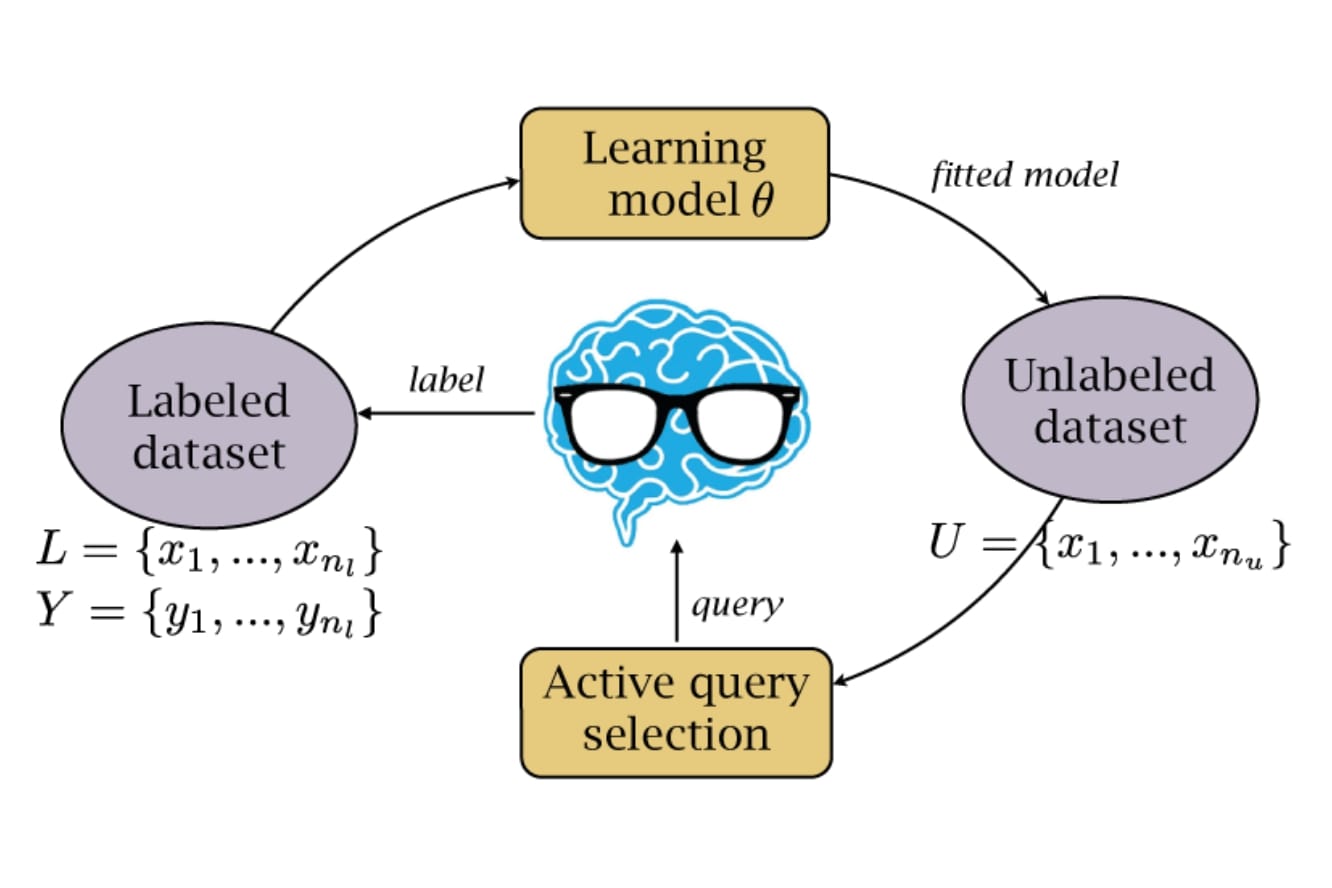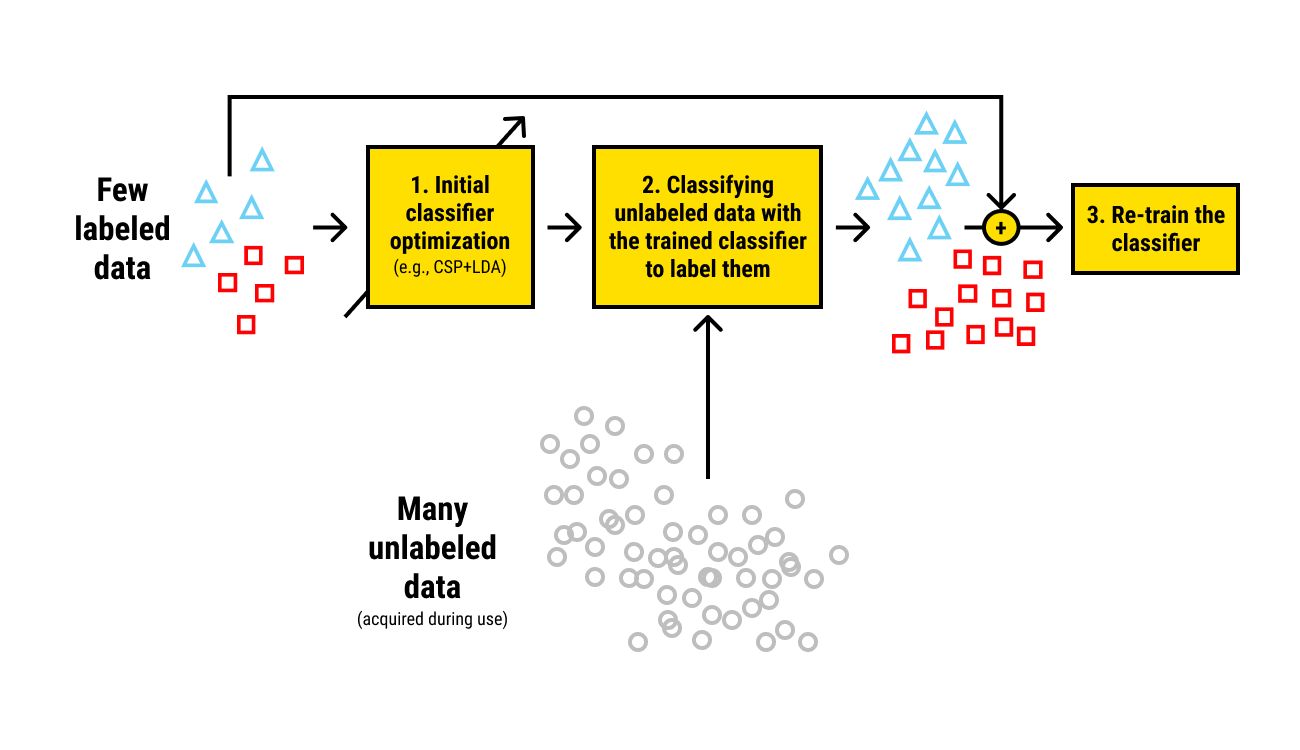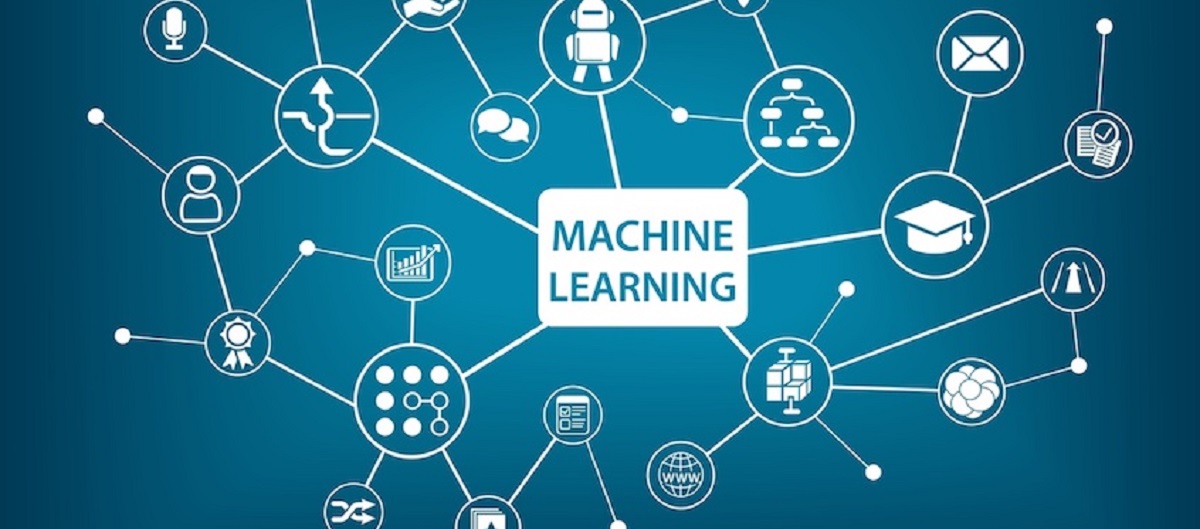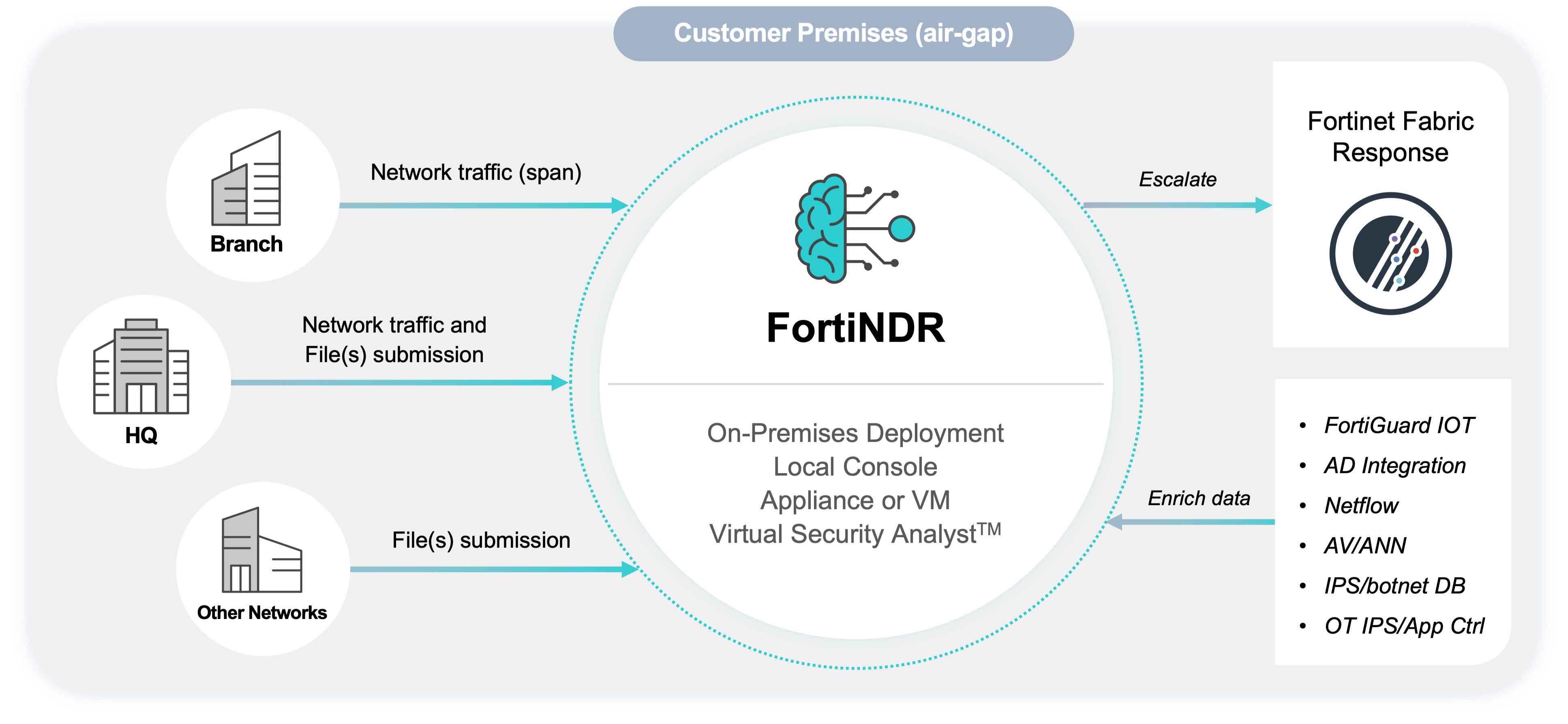Introduction
Welcome to the exciting world of active learning in machine learning! In this fast-paced and ever-evolving field, active learning has emerged as a powerful technique that revolutionizes how models learn from data. As algorithms and models become more advanced, the need for large labeled datasets grows exponentially. However, obtaining these labeled datasets can be time-consuming, expensive, and often impractical.
Active learning offers a solution to this problem by actively selecting the most informative data for training, reducing the reliance on large labeled datasets. In active learning, the model is not a passive recipient of labeled data but actively participates in the label acquisition process. By intelligently selecting which instances to label, active learning optimizes the learning process, resulting in more accurate and efficient models.
Active learning operates under the assumption that not all data points are equally informative for model training. Some instances contain more relevant information while others may be redundant or have limited impact on the model’s performance. By intelligently selecting which instances to label, active learning aims to maximize the quality of the labeled dataset while minimizing the labeling effort.
By applying active learning techniques, machine learning models can achieve superior performance with minimal human labeling effort. This makes active learning particularly valuable in scenarios where labeled data is scarce or expensive to obtain.
In this article, we will explore the concept of active learning, dive into the benefits it offers, and explore various techniques used in active learning. We will also discuss the challenges involved in implementing active learning and highlight its applications in different fields.
So, let’s embark on this journey of understanding active learning and discover how it can empower machine learning models to learn smarter and faster!
Definition of Active Learning
Active learning, in the context of machine learning, refers to a process where a model actively selects which instances to label in order to improve its learning performance. Unlike traditional supervised learning, where all available labeled data is used for training, active learning employs a querying strategy to iteratively select the most informative instances for labeling.
The core idea behind active learning is that not all data points are equally valuable for improving the model’s performance. By identifying the most uncertain or informative instances, the model can focus its labeling efforts on those specific examples, thereby maximizing the learning gain per labeled instance.
In active learning, the model interacts with an oracle, which is typically a human expert or an automated system capable of providing ground truth labels. The model starts with a small initial labeled dataset and iteratively selects unlabelled instances to query the oracle for their labels. The queried labels are then used to improve the model’s performance in subsequent iterations.
The key aspect of active learning is the query strategy, which determines the criterion for selecting the most informative instances to query. Different query strategies can be employed based on various criteria, such as uncertainty sampling, diversity sampling, or model disagreement.
Overall, the goal of active learning is to minimize the number of labeled instances required to achieve a desired level of performance. By selectively querying the most informative instances, active learning can significantly reduce the labeling effort while still achieving similar performance compared to traditional supervised learning methods that rely on large labeled datasets.
It is important to note that active learning is not a one-size-fits-all solution but rather a flexible framework that can be adapted to different learning tasks and models. The choice of query strategy, the selection of informative features, and the interaction with the oracle can be customized based on the specific requirements of the problem at hand.
In the next section, we will explore why active learning is crucial in machine learning and how it can benefit the learning process.
Why is Active Learning important in Machine Learning?
Active learning plays a vital role in machine learning for several compelling reasons. Let’s explore why active learning is important and how it can significantly benefit the learning process.
One of the primary reasons active learning is crucial in machine learning is the ability to optimize the utilization of labeled data. Labeled data is often scarce, expensive, or time-consuming to obtain. Active learning addresses this challenge by selecting the most informative instances for labeling, reducing the need for a large labeled dataset. This not only saves resources but also expedites the model training process.
By actively selecting instances to label, active learning enables models to focus on areas of uncertainty. Traditional supervised learning methods typically assume all instances contribute equally to the model’s learning process. However, active learning recognizes that not all instances carry the same information and that certain instances are more informative than others. By concentrating on these informative instances, active learning accelerates the learning process and improves the model’s performance.
Another advantage of active learning is its ability to handle concept drift and adapt to changing data distribution. In real-world scenarios, the underlying data distribution may change over time. Traditional machine learning approaches struggle to adapt to these changes, as they rely on stagnant labeled datasets. Active learning, on the other hand, allows the model to continually adapt and retrain based on the most relevant and informative instances, helping to mitigate the impact of concept drift.
Active learning also promotes active exploration of the feature space by selecting diverse instances for labeling. By including diverse instances, active learning helps to identify and understand various patterns and nuances within the data. This enables the model to build a comprehensive understanding of the underlying data distribution and make more robust and accurate predictions.
Furthermore, active learning can result in significant cost savings. By reducing the number of instances that need to be labeled, active learning minimizes the need for human annotators or expensive labeling processes. This makes active learning particularly beneficial in applications where labeling is labor-intensive, expensive, or involves expert knowledge.
Overall, active learning is important in machine learning because it optimizes the usage of labeled data, accelerates the learning process, adapts to concept drift, explores diverse patterns, and offers cost savings. By leveraging the power of active learning, machine learning models can achieve higher performance with fewer labeled instances, making it a valuable technique in various domains.
In the next section, we will delve deeper into how active learning works and explore different strategies and techniques used in the active learning process.
How does Active Learning work?
Active learning operates through an iterative process that involves selecting the most informative instances for labeling and updating the model based on the newly acquired labels. Let’s take a closer look at the steps involved in active learning and how it works.
The first step in active learning is to start with an initial labeled dataset. This dataset is typically small and can be randomly labeled or expert-labeled. The size of the initial dataset depends on the specific problem and available resources.
After initializing the model with the initial labeled dataset, active learning enters the iterative querying phase. In each iteration, the model analyzes the unlabeled instances and selects a subset of instances to query for labels. The selection is done based on a query strategy, which determines the criterion for selecting the most informative instances.
There are various query strategies used in active learning, each based on different principles. One common strategy is uncertainty sampling, where the model identifies instances for which it is the most uncertain in making predictions. These uncertain instances are considered to be informative because their labels could potentially have a significant impact on the model’s performance.
Another query strategy is diversity sampling, which aims to select instances that are dissimilar or representative of different regions of the feature space. By including diverse instances, the model can gain a comprehensive understanding of the data distribution and improve its generalization capabilities.
Once the instances are selected for labeling, the model requests their labels from an oracle, which can be a human annotator or an automated system capable of providing ground truth labels.
After acquiring the labels, the labeled instances are then added to the training set, and the model is retrained using the updated dataset. The iterative process continues, with the model re-evaluating the unlabeled instances, selecting new instances for labeling, obtaining their labels, and updating the model. This process iterates until a stopping criteria is met, such as reaching a desired model performance or exhausting the available resources for labeling.
It’s worth noting that the query strategy used in active learning can be adjusted based on the learning task and the characteristics of the dataset. Furthermore, active learning is a flexible framework that can be combined with different machine learning algorithms and models, including traditional classifiers, deep learning models, or ensemble methods.
Overall, active learning leverages the iterative querying process, informative query strategies, and updating of the model to optimize learning performance with minimal labeling effort. By actively selecting the most informative instances and continuously updating the model, active learning enables machine learning models to learn more efficiently and effectively.
In the next section, we will explore some common active learning techniques used in practice.
Common Active Learning Techniques
In active learning, various techniques are employed to select the most informative instances for labeling. These techniques aim to maximize the learning gain per labeled instance while minimizing the labeling effort required. Let’s explore some of the commonly used active learning techniques:
Uncertainty Sampling: This technique selects instances for labeling based on the model’s uncertainty in making predictions. It includes strategies such as Least Confident, where the model selects instances for which it has the lowest confidence in its predictions, and Margin Sampling, where the model identifies instances with the smallest margin between the top two predicted classes.
Query-by-Committee: This technique involves creating an ensemble of models and selecting instances for labeling based on their disagreement. It includes strategies like Vote Entropy, which measures the disagreement among the ensemble members, and Expected Model Change, which estimates how the model’s parameters would change if a particular instance were labeled.
Density-Based Sampling: This technique focuses on selecting instances that are sparsely represented in the feature space. It includes strategies like Cluster-based Sampling, where instances are selected from different clusters, and Boundary-based Sampling, where instances near the decision boundary of the model are chosen.
Query-by-Committee with Active Sampling: This technique combines the idea of Query-by-Committee with active learning by actively selecting the instances that provide the highest expected disagreement among the committee of models. It aims to maximize the diversity and informativeness of the selected instances.
Information-Theoretic Sampling: This technique uses information theory measures, such as entropy and mutual information, to quantify the amount of information an instance carries. It includes strategies like Maximum Entropy Sampling, which selects instances with the highest entropy, and Expected Model Change Maximization, which estimates the change in the model’s parameters if a particular instance were labeled.
Representative Sampling: This technique aims to select instances that are most representative of the underlying data distribution. It includes strategies like Cluster-based Representative Sampling, where instances are selected from each cluster to represent the diversity in the dataset, and Active Learning by Learning, where another model is trained to estimate the representativeness of the instances.
These are just a few examples of the active learning techniques used in practice. The choice of technique depends on the specific problem, the availability of labeled data, and the characteristics of the dataset. Often, a combination of multiple techniques is employed to maximize the performance and efficiency of the active learning process.
In the next section, we will discuss the advantages of using active learning in machine learning.
Advantages of Active Learning
Active learning brings several advantages to the machine learning process, making it a valuable approach in various domains. Let’s explore some of the key advantages of active learning:
Efficient Utilization of Labeled Data: Active learning optimizes the usage of labeled data by selecting the most informative instances for labeling. This reduces the dependence on large labeled datasets, saving resources and time. Active learning allows models to achieve comparable performance with fewer labeled instances, making it highly efficient.
Improved Model Performance: By actively selecting informative instances, active learning facilitates faster learning and improved model performance. The focused labeling effort on the most valuable instances helps the model to learn important patterns and uncertainties more effectively, leading to better predictions.
Savings in Labeling Costs: Active learning reduces the number of instances that need to be labeled, resulting in significant cost savings. By intelligently selecting instances for labeling, active learning minimizes the need for human annotators or expensive labeling processes. This is particularly beneficial in domains where labeling is labor-intensive or requires expert knowledge.
Adaptability to Concept Drift: Active learning enables models to adapt to concept drift by continuously retraining on the most relevant and informative instances. This allows the model to adjust to changing data distributions and remain up-to-date with new patterns and trends. Active learning ensures models’ longevity and accuracy in dynamic environments.
Exploration of Data Space: Active learning promotes active exploration of the feature space by selecting diverse instances for labeling. This helps uncover various patterns and nuances within the data, contributing to a more comprehensive understanding of the underlying data distribution. By including diverse instances, active learning enhances the model’s generalization capabilities and robustness.
Reduced Annotation Bias: By focusing on the most informative instances, active learning reduces annotation bias, which can occur when only a subset of instances is labeled. This helps in obtaining a more representative and unbiased labeled dataset, leading to better model performance and fairness.
These advantages illustrate the power and effectiveness of active learning in machine learning. By optimizing the usage of labeled data, improving model performance, reducing labeling costs, adapting to concept drift, exploring data space, and mitigating annotation bias, active learning unlocks the full potential of machine learning algorithms and models.
In the next section, we will explore the challenges involved in implementing active learning.
Challenges in Implementing Active Learning
While active learning offers numerous benefits, there are also challenges that need to be considered when implementing this approach. Let’s explore some of the challenges involved in implementing active learning:
Selection of Query Strategy: Choosing an appropriate query strategy is crucial in active learning. The selection depends on the specific problem, the characteristics of the data, and the learning task. The effectiveness of the query strategy can significantly impact the performance of the active learning process. It requires careful analysis and experimentation to identify the most suitable strategy.
Labeling Resource Limitations: Active learning relies on the availability of labeling resources, whether human annotators or automated systems. In scenarios where labeling resources are limited, active learning needs to optimize the allocation of these resources to maximize the learning gain. Balancing the trade-off between labeling effort and performance improvement is a challenge that needs to be addressed.
Annotation Quality: The quality of labeled data plays a crucial role in active learning. Inaccurate or inconsistent annotations can impact the model’s performance and the effectiveness of active learning. Ensuring high-quality annotations, particularly in cases where multiple annotators are involved, requires careful supervision and quality control measures.
Data Distribution Bias: Active learning assumes that the labeled instances are representative of the entire dataset. However, if the labeled instances exhibit bias or do not cover the full range of data, the model’s performance may be negatively affected. Addressing data distribution bias is essential to ensure the effectiveness and fairness of active learning.
Computational Complexity: Active learning can introduce additional computational complexity compared to traditional supervised learning methods. The iterative querying and retraining process can require more time and computational resources. Efficient implementation and optimization of active learning algorithms are necessary to minimize computational overhead.
Scaling to Large Datasets: Active learning techniques may face challenges when scaling to large datasets. The selection of informative instances becomes more computationally intensive, and the storage and processing requirements increase. Designing active learning strategies that can handle large-scale datasets efficiently is an ongoing research area.
Domain Dependence: The effectiveness of active learning can vary across different domains and problem settings. The performance and suitability of active learning techniques can depend on the specific characteristics and complexity of the data. Understanding the domain-specific challenges and tailoring active learning approaches accordingly is crucial for successful implementation.
Overcoming these challenges requires a combination of expertise in machine learning, careful experimentation, and a deep understanding of the problem domain. Despite these challenges, active learning continues to be a valuable approach in machine learning, offering opportunities for efficient learning and improved model performance.
In the next section, we will explore the applications of active learning in various fields.
Application of Active Learning in Various Fields
Active learning has found applications in numerous fields, revolutionizing the way machine learning is approached in various domains. Let’s explore some of the areas where active learning has been successfully applied:
Medical Diagnosis: Active learning has been utilized in medical diagnosis tasks to reduce the need for expert annotations. By selecting the most crucial and informative medical imaging data for labeling, active learning enables faster and more accurate diagnosis, while minimizing the burden on healthcare professionals.
Text Classification and Natural Language Processing: Active learning is widely employed in text classification and natural language processing tasks. By actively selecting instances that can provide the most knowledge gain, active learning assists in efficient document categorization, sentiment analysis, and information extraction, among other applications in the field of text analytics.
Image and Object Recognition: Active learning has proven to be beneficial in image and object recognition tasks. By actively selecting informative image instances, active learning streamlines the training process of deep learning models, improving their performance in image labeling, facial recognition, and object detection tasks.
Anomaly Detection: Active learning has applications in anomaly detection, where the goal is to identify rare or unexpected events. By actively selecting instances that may exhibit anomalous behaviors, active learning assists in building robust anomaly detection systems across domains such as fraud detection, network intrusion detection, and quality control.
Sensor Networks and Internet of Things (IoT): Active learning is employed in sensor networks and IoT environments to enable efficient data collection and monitoring. By selecting the most informative sensor readings, active learning improves the accuracy of various applications, including environmental monitoring, smart home systems, and industrial IoT.
Drug Discovery and Bioinformatics: Active learning is valuable in drug discovery and bioinformatics research. By intelligently selecting instances for expert analysis and experimental testing, active learning reduces the cost and time required for drug screening and prediction of protein structures, contributing to advancements in pharmaceutical research.
Human-Robot Interaction: Active learning plays a role in human-robot interaction by enabling robots to actively seek human feedback for learning. By identifying instances where human clarification or labeling is needed, active learning improves the adaptability and performance of robots in various interactive scenarios.
These are just a few examples among many fields where active learning has been successfully applied. The flexibility and effectiveness of active learning make it applicable in diverse domains, offering opportunities for efficient learning, improved model performance, and resource optimization.
In the final section of this article, we will wrap up our discussion on active learning.
Conclusion
Active learning is a powerful technique in machine learning that revolutionizes the learning process by selectively labeling the most informative instances. By actively seeking the most valuable data points, active learning optimizes the utilization of labeled data, accelerates the learning process, and improves model performance.
Through various query strategies and iterative querying, active learning allows models to focus on areas of uncertainty, adapt to concept drift, explore diverse patterns, and reduce annotation bias. It offers advantages such as efficient utilization of labeled data, improved model performance, cost savings in labeling efforts, adaptability to changing data distributions, and reduced annotation bias.
Despite the challenges involved in implementing active learning, such as selecting appropriate query strategies, dealing with limitations in labeling resources, managing data distribution bias, addressing computational complexity, and scaling to large datasets, active learning continues to be applied successfully in various fields.
Active learning finds applications in medical diagnosis, text classification, image and object recognition, anomaly detection, sensor networks, drug discovery, human-robot interaction, and more. Its versatility and effectiveness make it a valuable approach that empowers machine learning models to learn smarter and faster in a wide range of domains.
In conclusion, active learning offers a promising path towards more efficient and effective machine learning. By actively selecting the most informative instances for labeling, active learning enables models to achieve superior performance with minimal labeled data. As the field of machine learning continues to advance, active learning will undoubtedly play a crucial role in shaping the future of intelligent systems.

























